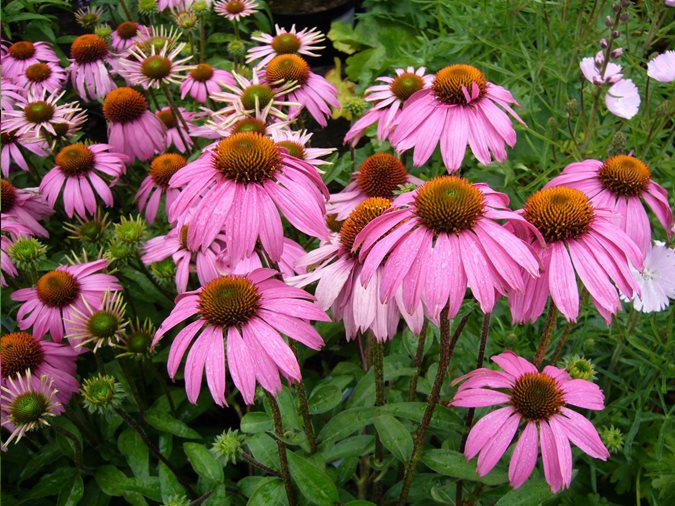

It will tolerate poor soil quite well, though. The coneflower plant is quite drought-tolerant but likes well draining fertile soil. Moisture and Soil requirements for Coneflowers
#WHEN TO CUT BACK PURPLE CONEFLOWER FULL#
The plant will tolerate light shade but does best in full sun since those grown in shadier spots will “reach” for the sun. Grow coneflowers in full sunlight so that the plant gets at least 5 hours of sunlight a day.
#WHEN TO CUT BACK PURPLE CONEFLOWER HOW TO#
Here are some tips that will show how to care for purple coneflowers. With minimal care, this robust perennial will give you years of showy flowers. Deadheading during the flowering cycle will also extend bloom time but is not necessary. Removing the flower stalks as the plant sets seed will prolong the flowering cycle. The flowers are daisy like in appearance and can be quite large (some as large as 6 inches in diameter.) The plant rarely needs staking in spite of the tall flower stalks. Each flower head will remain in bloom for several weeks. The cone shaped flowers sit above the plant on 2-5 foot tall flower stalks. Purple coneflower plants will bloom in the summer of their second year and then each year after that. One version has such a large raised center that it is known as a “ sombrero Mexican hat coneflower!” Echinacea flowers

The petals also come in double and single layers and the center of the flower can vary to a large degree, depending on variety. They also come in yellow and the modern hybrids have a large range of colors.

The name is a bit of a misnomer, since not every echinacea will have purple flowers. The most commonly grown variety of this sturdy plant are the purple coneflowers, also known by their botanical name echinacea purpurea. Some of the dwarf varieties will grow to only about a foot and a half. Most purple coneflowers will grow to 2-4 feet tall and about 18-24 inches wide. The size of the plant and depends of the type that you grow, as well as your growing conditions. They can really take temperatures that would make other plants shrivel and die!Ĭoneflowers are perennials which means that, once established, the plant will return year after year. The coneflower plant is drought tolerant and is a great perennial if you live in an area that has high heat. The plant blooms in the middle of the summer, but the dried flowers also have fall and winter interest for birds long after the bloom time. The center of the plant is where the seeds of the plant lie and it is very attractive to bees, butterflies and birds. They sit on tall stems and have a raised center area surrounded by petals. If you are looking for a plant that will draw butterflies and birds to your garden, the perennial coneflower us a great choice.Įchinacea flowers are attractive and rugged. Leaving a few spent flowers may attract birds, because they like to snack on the seeds.The purple coneflower is native to the South Eastern United States. Although it is not necessary to deadhead coneflowers, it keeps the garden tidy. Deadheading does not change the size of flowers or the length of the blooming season. When coneflower blooms start to fade, they can be deadheaded. You can also deadhead Echinacea to increase the size of the newer blooms. A list of perennials to cut back in fall includes: Bellflowers (Campanula)Īlso question is, should I cut back echinacea in the fall?Ĭutting back the plants delays blooming so you can either cut back all your plants for a late summer and fall display, or only cut back some of the plants and stagger the bloom times for an even longer season. Perennial flowers and some grasses, on the other hand, should be cut back in the fall to keep them looking tidy and to control diseases. Likewise, should perennials be cut back in the fall? In general, you should prune shrubs and trees in late winter or spring.

Allow the flowers to dry out and turn brown. This will give them a natural food source and help them survive through the winter. If you want to help out your local bird population, let the plants stand through winter. Regarding this, how do you winterize coneflowers?Ĭoneflowers can be trimmed in the fall or spring and the plant will do just fine. Cut down the coneflowers to soil level after they stop blooming and wither or after a frost. Cut them off from about 1/4 inch above the closest flower buds with pruning shears. Coneflowers ( Echinacea spp.) Deadhead coneflowers throughout the summer and early fall when the flowers wither or dry up.


 0 kommentar(er)
0 kommentar(er)
